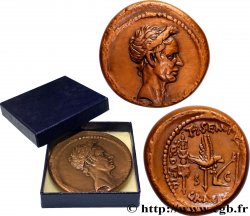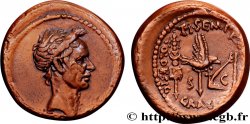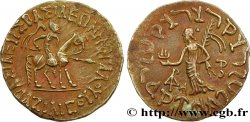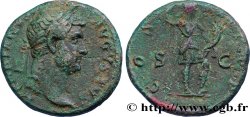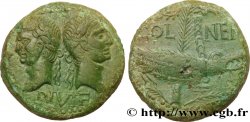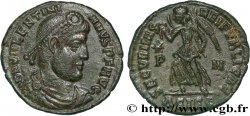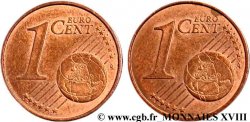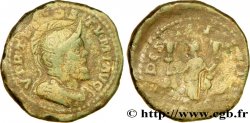brm_616455 - GIULIO CAESAR Denier
non disponibile.
Articolo venduto sul nostro negozio (2021)
Prezzo : 1 500.00 €
Articolo venduto sul nostro negozio (2021)
Prezzo : 1 500.00 €
Tipo : Denier
Data: 49 AC.
Nome della officina / città: Gaule ou Italie
Metallo : argento
Titolo in millesimi : 950 ‰
Diametro : 16,5 mm
Asse di coniazione : 5 h.
Peso : 3,94 g.
Grado di rarità : R1
Commenti sullo stato di conservazione:
Superbe exemplaire, légèrement décentré au revers. Monnaie de haut relief. Magnifique éléphant. La monnaie a conservé une partie de son brillant de frappe et de son coupant d’origine. Patine grise de collection
N° nelle opere di riferimento :
Pedigree :
Exemplaire provenant de la collection A. L
Diritto
Titolatura diritto : CAESAR À L'EXERGUE.
Descrittivo diritto : Éléphant passant à droite ; à ses pieds, un serpent (ou carnyx, trompette gauloise).
Traduzione diritto : “Cæsar”, (César).
Rovescio
Titolatura rovescio : ANÉPIGRAPHE.
Descrittivo rovescio : Instruments pontificaux : simpulum, aspersoir, hache à sacrifice, chapeau à sacrifice.
Commento
Pour ce type, M. Crawford a relevé une estimation de 750 coins de droit et de 833 coins de revers, représentant une production qui pourrait avoisiner les deux à quatre millions de deniers. Pendant très longtemps, on pensa que ce denier avait été frappé par César pendant la Guerre des Gaules entre 58 et 52 avant J.-C., en Gaule même. En fait, il fut fabriqué au début des Guerres Civiles. Il a été imité servilement par les Trévires avec le bronze HIRTIVS (LT. 9235), fortement romanisé.
For this type, Mr. Crawford noted an estimate of 750 obverse dies and 833 reverse coins, representing a production which could be around two to four million denarii. For a very long time, it was thought that this denarius had been struck by Caesar during the Gallic Wars between 58 and 52 BC, in Gaul itself. In fact, it was made at the start of the Civil Wars. It was slavishly imitated by the Trévires with the bronze HIRTIVS (LT. 9235), strongly romanized
For this type, Mr. Crawford noted an estimate of 750 obverse dies and 833 reverse coins, representing a production which could be around two to four million denarii. For a very long time, it was thought that this denarius had been struck by Caesar during the Gallic Wars between 58 and 52 BC, in Gaul itself. In fact, it was made at the start of the Civil Wars. It was slavishly imitated by the Trévires with the bronze HIRTIVS (LT. 9235), strongly romanized







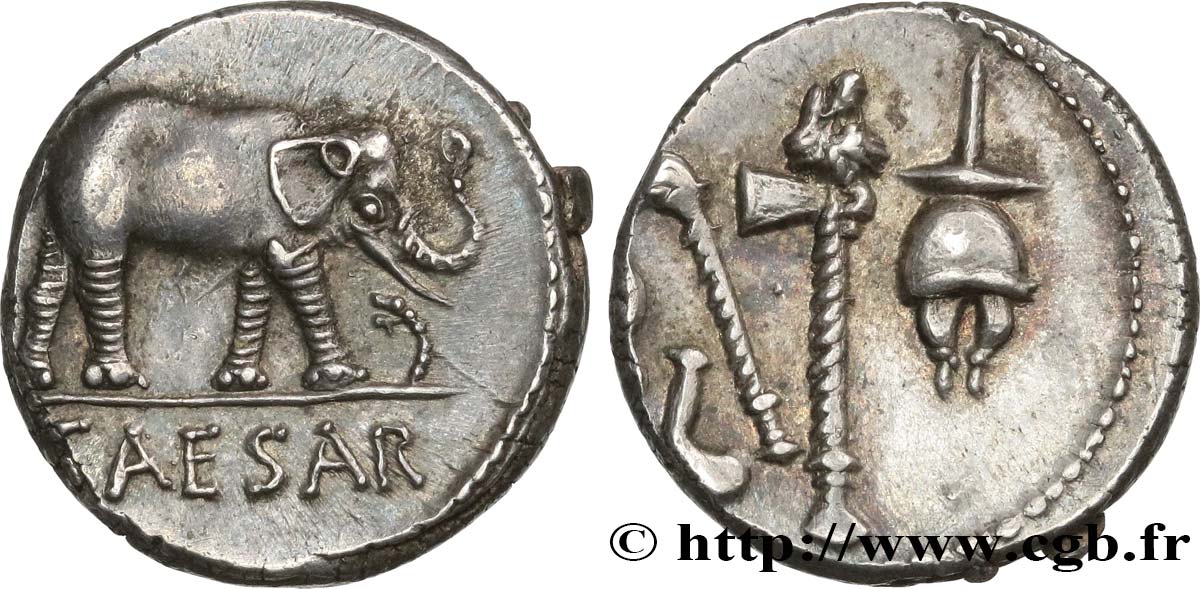
 Segnalare un errore
Segnalare un errore Stampate la pagina
Stampate la pagina Condividi mia selezione
Condividi mia selezione Fai una domanda
Fai una domanda Consegnare / vendere
Consegnare / vendere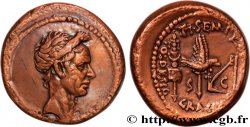
 Descrittivo
Descrittivo